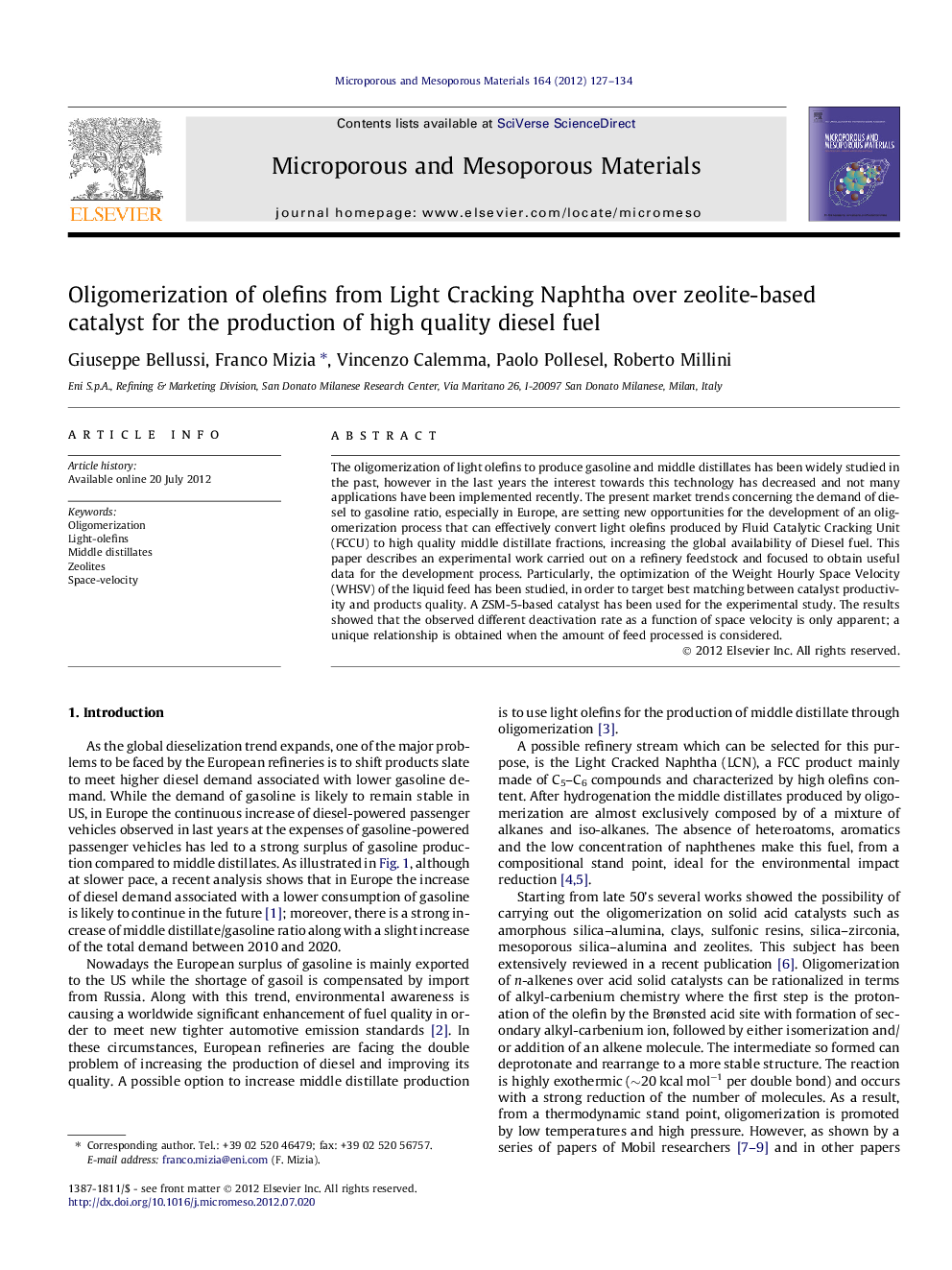| Article ID | Journal | Published Year | Pages | File Type |
|---|---|---|---|---|
| 74081 | Microporous and Mesoporous Materials | 2012 | 8 Pages |
The oligomerization of light olefins to produce gasoline and middle distillates has been widely studied in the past, however in the last years the interest towards this technology has decreased and not many applications have been implemented recently. The present market trends concerning the demand of diesel to gasoline ratio, especially in Europe, are setting new opportunities for the development of an oligomerization process that can effectively convert light olefins produced by Fluid Catalytic Cracking Unit (FCCU) to high quality middle distillate fractions, increasing the global availability of Diesel fuel. This paper describes an experimental work carried out on a refinery feedstock and focused to obtain useful data for the development process. Particularly, the optimization of the Weight Hourly Space Velocity (WHSV) of the liquid feed has been studied, in order to target best matching between catalyst productivity and products quality. A ZSM-5-based catalyst has been used for the experimental study. The results showed that the observed different deactivation rate as a function of space velocity is only apparent; a unique relationship is obtained when the amount of feed processed is considered.
Graphical abstractFigure optionsDownload full-size imageDownload as PowerPoint slideHighlights► Conversion of a gasoline into diesel over a medium pore zeolite. ► Quality of product is a function both of the productivity and aging of catalyst. ► Catalyst performances can be enhanced by increasing pressure and temperature.
